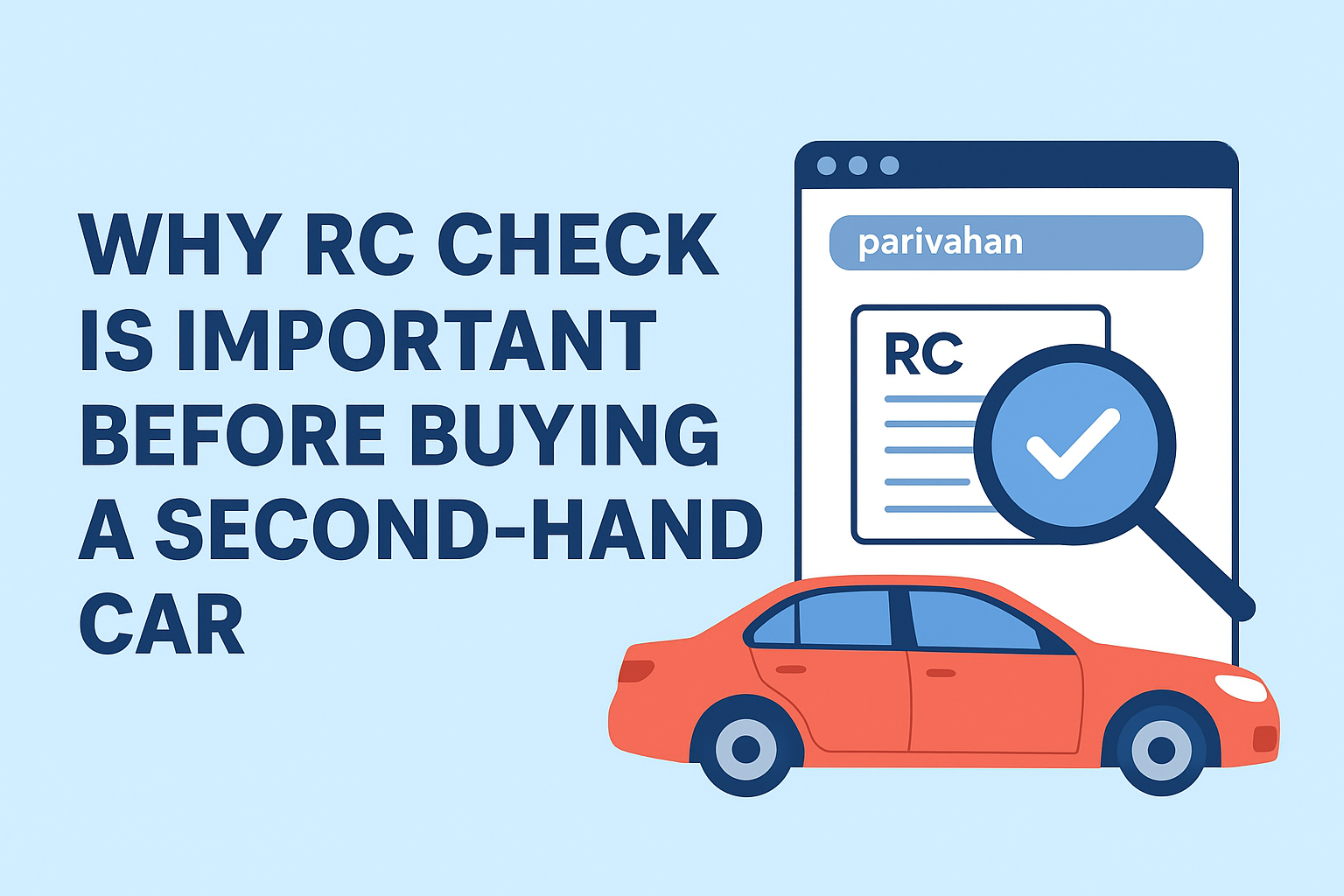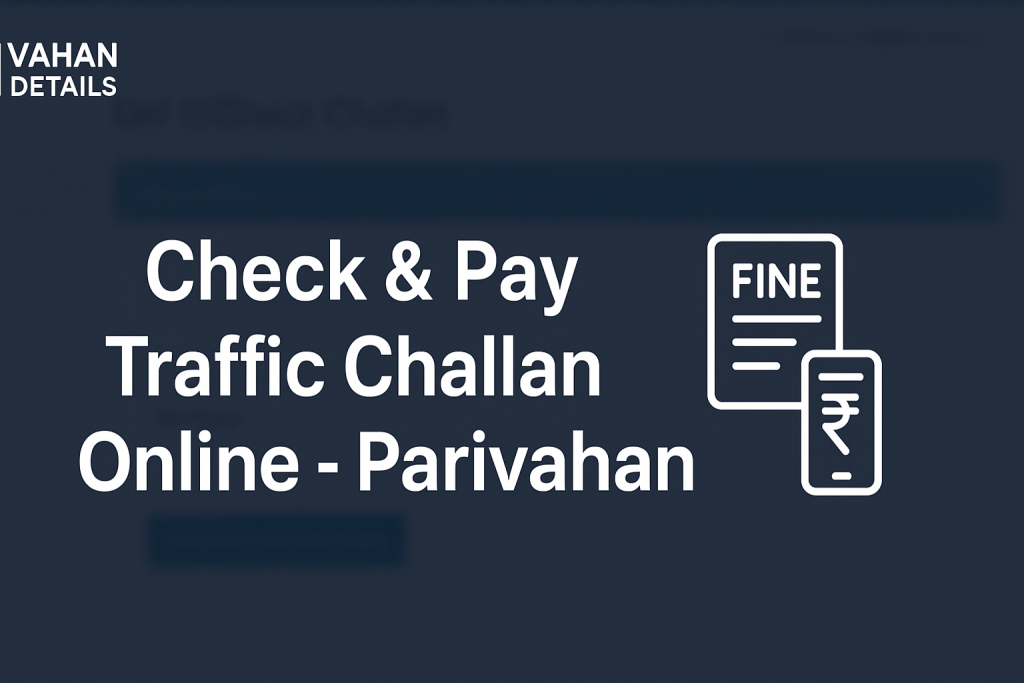
Why RC Check Matters Before You Buy a Used Car
Buying a second-hand car always feels like a small victory — especially when you find one that fits your budget and still looks brand new. But here’s where most people slip: they forget to check the Registration Certificate before paying.
I’ve seen this mistake play out too many times. Someone closes the deal, drives home proud, and a week later finds out the car has pending loans, old fines, or worse — ownership disputes. What should’ve been a quick, happy purchase turns into months of paperwork and headaches. And all of that could’ve been avoided with a ten-minute RC verification.
Before you sign anything or hand over the money, it’s worth knowing what the RC actually is and why it’s more important than it looks.
What Exactly Is a Registration Certificate?
Think of the RC (Registration Certificate) as the car’s official identity card. It’s issued by the Regional Transport Office (RTO) and carries every legal detail tied to that vehicle:
-
Owner’s name and address
-
Registration number
-
Engine and chassis numbers
-
Date of registration
-
Vehicle type (private or commercial)
-
Validity of registration and fitness certificates
Without this document, the vehicle legally isn’t yours — even if you’ve paid for it. It’s the paper that proves the car exists in government records and confirms who owns it.
5 Big Reasons You Should Always Verify the RC
1. Confirms the Real Owner
It sounds basic, but a lot of sellers aren’t actually the registered owners. Sometimes they’re selling on behalf of someone else, or the ownership transfer never got updated. If the RC name doesn’t match their ID, pause right there.
2. Reveals Pending Loans
If the RC mentions “Hypothecated to [Bank Name],” that means the car’s still under finance. Until that’s cleared, it technically belongs to the bank. You want to see “Hypothecation Removed” or no bank name at all.
3. Tells You the Truth About the Car
The RC doesn’t lie. It lists the registration year, fuel type, and category. Cross-check those with what the seller says — it’ll save you from stories about a “barely used” car that’s actually older than claimed.
4. Helps You Avoid Hidden Dues
Expired insurance? Unpaid road tax? The RC shows all those validity dates. If anything’s missing or outdated, ask the seller to renew it before you go ahead.
5. Gives a Glimpse Into Its Legal History
A quick RC check can reveal past accidents, stolen-vehicle reports, or unpaid challans. It’s your easiest safeguard against inheriting someone else’s legal problems.
How to Check RC Details Online
No standing in RTO lines, no forms to fill. You can verify an RC in minutes, right from your phone.
Option 1: Parivahan Portal
Head to the official Parivahan website. Under “vehicle-related services,” type in the registration number. You’ll instantly get details like owner name (partially hidden), registration date, fuel type, and validity status.
Option 2: mParivahan App
Download the mParivahan app (available on Android and iOS). Enter the vehicle number, and it’ll show you insurance and fitness certificate validity too. It’s one of the simplest tools to use.
Option 3: Reliable Third-Party Platforms
Sites like vahandetails.com pull verified data from government servers but make it easier to view. They’re handy for quick checks, though you should always confirm ownership through official portals before paying anyone.
Things to Double-Check Before Finalising the Deal
Once you have the RC data, go through this quick checklist:
-
Owner’s Name: It should exactly match the seller’s ID. Even small spelling errors deserve attention.
-
Engine and Chassis Numbers: Physically match these on the car. If they don’t line up, don’t proceed.
-
Vehicle Classification: See if it’s registered as private or commercial — commercial vehicles often come with extra costs.
-
Outstanding Dues: Look for unpaid loans, taxes, or challans. Clean records are worth more than a small discount.
-
Certificate Validity: Check insurance, PUC, and fitness certificate dates. Renewing them later can be costly.
When Something Feels Off
If the RC still lists a previous owner or an old address, that means the transfer wasn’t completed. Never hand over payment until the seller updates the registration and shows proof from the RTO.
Anyone who hesitates or delays this step is a red flag. A legitimate seller has no reason to hide documents.
A Few Smart Habits for Safer Used Car Purchases
-
Verify every related document — RC, insurance, challans, loan clearance.
-
Meet the seller in person, not just over a call or text.
-
Prefer certified pre-owned platforms that include documentation checks.
-
Keep digital copies of everything after the sale — it makes renewals or resale smoother.
Final Thoughts
Buying a used car can be a great financial move if you do it carefully. The RC isn’t just paperwork; it’s the car’s truth — who owns it, what it’s been through, and whether it’s clear to sell.
Taking a few minutes to verify those details saves you from the kind of mess that money can’t quickly fix. With tools like Parivahan and mParivahan, it’s simple and free.
That shiny deal might look perfect at first glance, but a genuine RC check is what separates a smart purchase from a risky one. Double-check before you sign and drive off knowing you made the right call.


